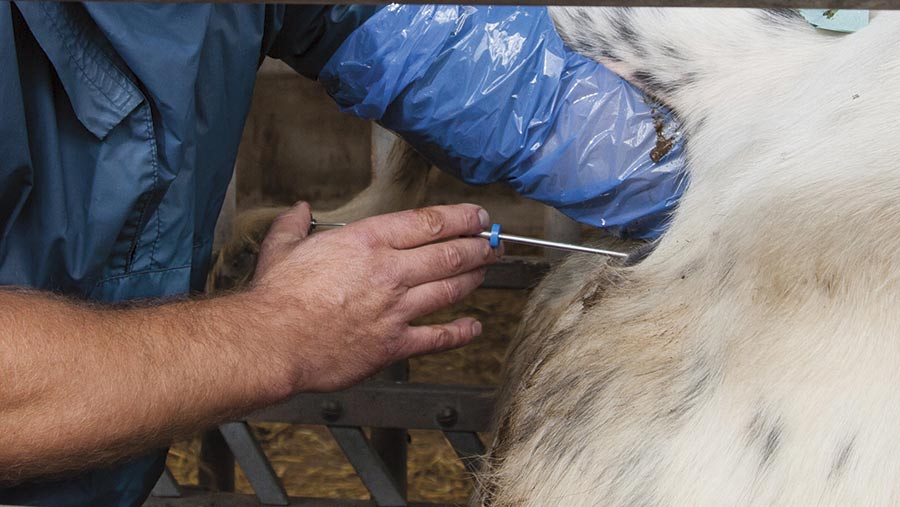Sire selection one of easiest ways to improve beef fertility
 © Cogent
© Cogent Keeping records and making better efforts to select the right sire is key to helping beef producers improve fertility and increase profitability on their farm, according to scientists.
Research by the Agri-Food and Biosciences Institute (AFBI) in Northern Ireland found sire selection was one of the most important factors in ensuring good fertility in suckler herds, and was one of the simplest ways for farmers to make improvements.
Farmers who also kept good records around calving intervals were also more likely to have higher levels of fertility on their farm, scientists discovered.
See also: Beef Focus Farm: How reducing waste is maximising beef margins
The findings came from the analysis of management systems across more than 100 beef farms in Northern Ireland, which were compared against historical data on herd fertility.
Researchers wanted to find out if there was any link between how farmers managed their cattle and the length of calving intervals across a herd.
“Previous research has shown that calving intervals across Northern Ireland and the rest of the UK is about a month longer than the optimum 365 days, which isn’t economically efficient,” says AFBI research scientist Frances Titterington, one of the experts behind the study.
“We know fertility needs to be improved, but it can be difficult to determine exactly what is causing the inefficiencies.”
The study found there were five key management factors which were linked to improved fertility on suckler units:
- Vaccinating cattle
- Fertility management
- Record-keeping
- Perceptions of extension services
- Sire selection
However, sire selection and record-keeping have the potential to have the biggest effects, Ms Titterington said.
“We found most farmers in the survey were using estimated breeding values [EBVs], which is positive, but some were still selecting on appearance,” she added.
Those who did use EBVs had consistently better herd fertility, registering 5% fewer extended calving intervals than farmers who selected on appearance.
“Choosing the right sire is the easiest way to make a difference. If you can improve the genetics of the herd you are giving yourself a head start.”
Artificial insemination
The study also found issues of fertility management were linked to sire selection, particularly around the use of artificial insemination (AI).
“As the proportion of AI increased, the calving interval also increased, which was surprising,” Ms Titterington says.
“We think it’s down to heat detection and poor use of the technology, rather than the technology itself, so it’s an argument for farmers to consider synchronisation to improve it.”
One of the simplest ways to make improvements was around record keeping, she added, with farmers who kept accurate records achieving 11-day shorter calving intervals than the survey’s average of 385 days.
“If you have a baseline knowledge then it helps you make informed decisions and take proper action to change management techniques.
“There’s no magic bullet, but there are marginal gains to be made. By making lots of small improvements across the enterprise, farmers will be able to make a lot of difference.”
‘Bulls are key to fertility’
For beef farmer Iain Green, selecting the right sire and recording information is key to the success of his commercial suckler and pedigree herds.
“In my eyes, the bull is number one,” says Mr Green, who rears 180 Simmental cattle and 480 suckler cattle with his family at Corskie Farm near Elgin.
“The bull is half of your herd, so if you don’t have the right fertility then you’re struggling from the word go.”
Mr Green says he has reaped the benefits of fertility testing for several years, and in the past three years has also started to fertility test the bulls produced on the farm.
“We fertility test all of the bulls before we sell them, which I think is very important. The last thing a commercial manager wants is to discover a cow isn’t in calf.
“Testing them is a selling point, as well as giving peace of mind to buyers.”
Record-keeping is also very important to keeping track of herd fertility and understanding what changes in management practice the family needs to implement, he adds.
“We use a software package to record everything from how many days a cow is between calf, to how many calves an animal has had.
“Data is a key management tool for us because we want to minimise how many days a cow is empty.”
